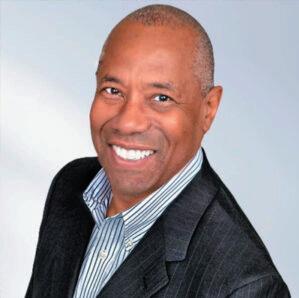
5 minute read
FSLA ENGAGE Summer 2023
Surfing the SEA CHANGE in Assisted Living
John Henry Pitts , Jr . Business Development Coordinator, Florida Senior Living Association
The Assisted Living and Independent Living sectors of the senior housing market are amid a dramatic sea change, facing challenges and uncertainties that they have not previously had to address!
In 2023, senior living providers need to become more focused than ever on the next generation of consumers. They are also struggling more than ever to find ways to evolve their senior living products and services.
• Increasing Population and Changing Demographics
• Redefining Active Adult Living Communities
• Changing Medical and Mental Health Needs
• Liability and Litigation Risk and Uncertainty
Florida Senior Living Association (FSLA) remains nimble in adjusting
to changing economic and market conditions to provide our members with the most current resources to help them thrive in their everyday operations and future growth.
Increasing Population and Changing Demographics
Over the past twenty years, the housing market for seniors, particularly Assisted Living and Independent Living communities, has experienced tremendous growth and evolution. Each passing year brings the supply market for senior living closer to the enormous demand wave. In 2023, senior living developers and providers are now more focused than ever on this next generation of consumers. With the aging baby-boom generation, the US will experience a significant increase in the number of middle-income seniors ages seventy-five and older by 2029.
Redefining Active Adult Living Communities
Senior Living corporations are redefining the active adult product, finding new ways to scale up, reimagining how senior living communities operate, and reimagining the value proposition they present to their consumers. The latest analysis of various industry research reveals that life plan or master-planned community residents tend to have better markers of wellness, such as physical, emotional, social, intellectual, and vocational wellness, compared to older adults living at home.
Senior living developers, management companies, and community operators are embracing design concepts that creatively add to a community’s overall unit total with new freestanding units. The phenomenon of independent, active adult communities has gained strength over the past several years.
Changing Medical and Mental Health Needs
Even though Assisted Living and Independent Living communities are not considered a traditional healthcare setting, concern has been growing about residents’ increasing medical and mental health needs. In 2023, this trend has only intensified and evolved. As the assisted living concept has grown and become more popular, residents are now older than in the past and need more healthcarerelated services. In 2021, a Delphi consensus of healthcare experts called for more focus on the communities’ medical and mental health needs.
Then there is the continued rise of integrated care models supported by Medicare Advantage and other managed care plans. Increasingly, payers see the value of working with senior living providers that can help better manage the health of large older adult populations.
Liability and Litigation Risk and Uncertainty
The senior living industry is cognizant of various liability and litigation risks, given its nature of caring for older adults who sometimes need help with complex medical and care conditions. There was a time in the nottoo-distant past when Assisted Living and Independent Living operators were rarely in the eye of regulators or plaintiff attorneys. Over the last decade, it has become increasingly imperative that senior living operators know and plan for an increasingly complicated legal environment.
Jason Hand, Florida Senior Living Association, Vice President of Public Policy and Legal Affairs, said that Florida’s assisted living communities provide a home for older adults and help with activities of daily living and deserve at least similar procedural courtroom safeguards in place for nursing homes.
“Florida’s assisted living facilities provide a home – as well as critical activities of daily living – to our seniors, helping ensure they have choice, dignity, and quality of life. Our ALFs deserve at least the similar procedural courtroom safeguards in place for nursing homes, if not those afforded to other health care providers. Because Florida’s ALFs are not provided similar
protections regarding who can be sued and what type of damages can be recovered, the target on ALFs’ backs gets bigger year after year, contributing to increasing insurance costs and rising costs for seniors and their families that are unsustainable. Florida’s ALF industry is in desperate need of measured, meaningful protections, which only the Florida Legislature can provide.”
Conclusions
Assisted Living communities are a robust housing and care alternative for those who need or desire it. The Assisted Living sector is the largest provider of residential long-term care in the US. There are many flavors of assisted living, and FSLA believes the senior living industry will eventually need to be more purposeful about naming what they are and who they are best suited to care for.
Assisted Living and Independent communities are now addressing:
1. Staff and staff training
2. Nursing and related services
3. Resident assessment and care planning
4. Policies and practices
5. Medical and mental health clinicians and care
The consumers in this sector will face quite a diverse set of opportunities relative to today’s middle-income seniors. People may experience increasing health needs, deteriorating mobility, and cognitive impairment as they age but seniors are also staying much more active and engaged.




